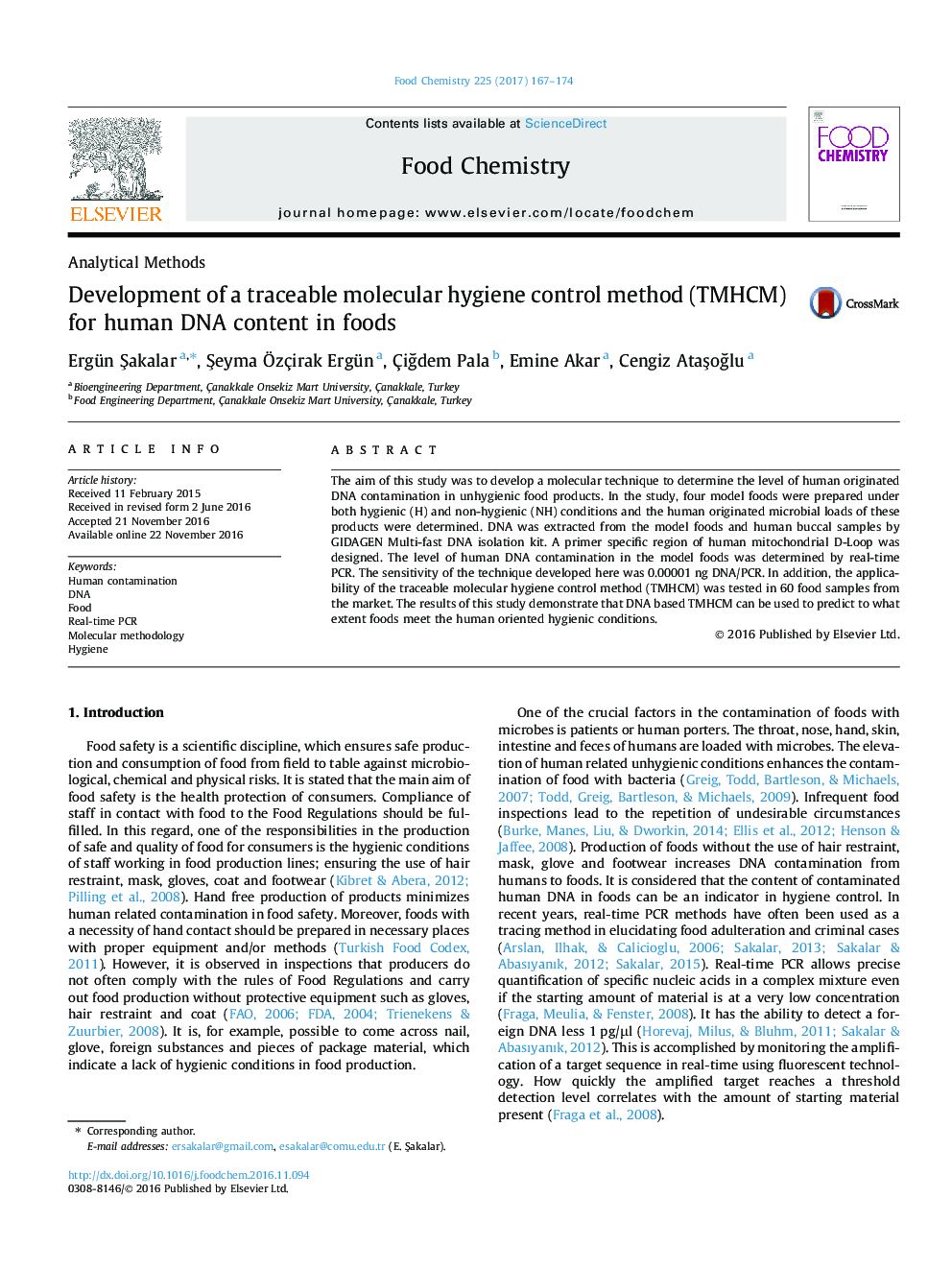| کد مقاله | کد نشریه | سال انتشار | مقاله انگلیسی | نسخه تمام متن |
|---|---|---|---|---|
| 5133928 | 1492067 | 2017 | 8 صفحه PDF | دانلود رایگان |

- A novel method was developed for the quantification of Human DNA in unhygienic foods.
- The method detects non-hygienic levels (very high, high and low) of foods.
- A powerful primer set was designed for the low detection limit of human DNA in foods.
- Absolute detection limit of novel method was 0.00001 ng/μL for human DNA in food.
- It allows to predict to what extent foods meet the human oriented hygienic conditions.
The aim of this study was to develop a molecular technique to determine the level of human originated DNA contamination in unhygienic food products. In the study, four model foods were prepared under both hygienic (H) and non-hygienic (NH) conditions and the human originated microbial loads of these products were determined. DNA was extracted from the model foods and human buccal samples by GIDAGEN Multi-fast DNA isolation kit. A primer specific region of human mitochondrial D-Loop was designed. The level of human DNA contamination in the model foods was determined by real-time PCR. The sensitivity of the technique developed here was 0.00001Â ng DNA/PCR. In addition, the applicability of the traceable molecular hygiene control method (TMHCM) was tested in 60 food samples from the market. The results of this study demonstrate that DNA based TMHCM can be used to predict to what extent foods meet the human oriented hygienic conditions.
Journal: Food Chemistry - Volume 225, 15 June 2017, Pages 167-174